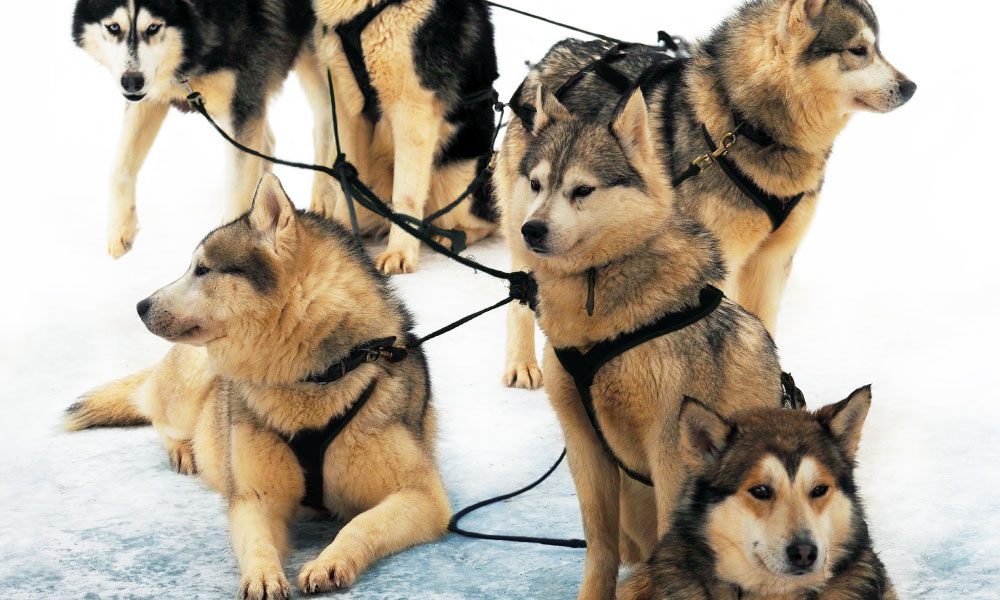Old Dogs – New Tricks; New Dogs – Old Tricks

I am increasingly interested in the challenges and opportunities presented by multi-generational workforces. Within the past twenty years, at least two new cohorts of workers have entered the workplace, and the great recession, COVID, inflation and interest rate adjustments, and general improved health and longevity have contributed to an unprecedented employment reality of workers spanning an age difference of 50 years operating side-by-side. And in the case of the older generation, it isn’t necessarily the case that the oldest workforce cohort is “in charge”. This leads to a complexity of expectations, behaviors, values and norms, and general outlook on life throughout the workforce.
In a previous blog post, I analyzed the challenges posed by the entrance of the Millennial cohort into the workforce at large. Numerous periodicals and think tanks had commented on the complication (if not disruption) created by this new group of young workers with somewhat radical ideas about work, and its purpose, both in terms of personal satisfaction and also its basic worth to society as a whole.
In this blog, I thought it only fair to expand this analysis to all of the workforce cohorts showing up for work (whether in person, or online) — Baby Boomers, Generation X, Millennials, and Generation Z. First, I thought it important to provide basic descriptors of each cohort as a “level-setting” exercise:
| Characteristic | Baby Boomers | Generation X | Millennials (Generation Y) | Generation Z |
| Birth Years | 1946 – 1964 | 1965 – 1980 | 1981 – 1996 | Late 1990s – early 2010s |
| Technology | Adapted to tech’s rise | Early adopters of tech | Grew up with technology | Born into technology |
| Work Ethic | Dedicated and loyal | Independent and adaptable | Value work-life balance | Seek meaningful work |
| Communication | Face-to-face and phone | Balanced communication | Digital communication savvy | Multitaskers, online |
| Attitude towards Authority | Respect for authority | Skeptical but respectful | Desire more collaboration | Prefer hands-on guidance |
| Work Style | Traditional and hierarchical | Self-reliant and pragmatic | Collaborative and diverse | Entrepreneurial mindset |
| Leadership Expectations | Respect hierarchical structures | Prefer autonomy | Seek mentors and feedback | Value authentic leaders |
| Values | Hard work and loyalty | Work as a means to an end | Value experiences and impact | Value authenticity |
| Technology Use | Adapted gradually to tech changes | Adapted to tech’s rise | Adapted seamlessly | Grew up with smartphones |
| Diversity and Inclusion | Traditional views on diversity | Embrace diversity | Value diversity and equity | Embrace individuality |
| Entrepreneurship | Worked for job security | Value innovation | Entrepreneurial mindset | Prefer freelancing |
| Environmental Awareness | Start of eco-awareness | More environmentally conscious | Strong focus on sustainability | Environmental advocates |
| Education Approach | Traditional education approach | More traditional | Collaborative learning | Prefer experiential |
| Social Activism | Advocated for social change | Advocated for change | Strong social conscience | Engaged in social causes |
| Financial Outlook | Worked toward financial security | Concerned about financial security | Manage student debt | Prudent financial habits |
Next, I analyzed these differences per cohort through the lens of “Work Habits”:
| Work Habit | Baby Boomers | Generation X | Millennials (Generation Y) | Generation Z |
| Work Hours | Traditional 9 to 5 | Flexible work hours | Value work-life balance | Embrace flexible schedules |
| Communication | In-person, phone calls | Email, mix of in-person | Digital communication | Digital-first approach |
| Collaboration Style | In-person meetings | Mix of in-person and virtual | Collaborative tools | Digital collaboration |
| Feedback and Recognition | Prefer face-to-face | Appreciate feedback | Regular feedback, rewards | Frequent feedback |
| Technology Use | Adapted to changing tech | Early adopters of tech | Grew up with technology | Born into technology |
| Learning and Development | Formal training programs | Self-directed learning | Online courses, webinars | YouTube, online courses |
| Leadership Interaction | Hierarchical interactions | Prefer autonomy | Seek mentorship | Collaborative approach |
| Goal Setting | Long-term goals | Mix of short and long-term | Prefer shorter cycles | Agile goal setting |
| Communication Style | Formal and structured | Mix of formal and casual | Informal and quick | Digital and concise |
| Multitasking | Limited multitasking | Efficient multitasking | Comfortable multitasking | Comfortable multitasking |
| Work Environment | Traditional office | Prefer autonomy in space | Flexible and remote work | Remote work, tech-enabled |
| Problem Solving | Experience-based | Pragmatic approach | Innovative solutions | Collaborative approach |
| Work-Life Balance | Work-centric | Strive for balance | Seek balance and purpose | Value work-life balance |
| Adaptability to Change | Less comfortable with rapid change | Adapt to change | Embrace change and innovation | Born into change |
Last, using the descriptive qualities and differences of the above, I thought to compare each cohort in a new table, comparing how one cohort’s negative reaction to another’s values may come across as a negative for the challenging cohort, using the original complaints leveled at Millennials which I discussed in that previous blog post:
A sense of entitlement
Arrogance
Inappropriate appearance
Lack of punctuality
Irregular attendance
Dishonesty
Attentiveness
Sticking with a task through completion
Which created the table below:
| Criticism | Baby Boomer Employees | Generation X Employees | Millennial Employees | Generation Z Employees |
| Sense of entitlement | Could be criticized for resisting change or being resistant to new technologies. | May be seen as valuing work-life balance over company loyalty. | May be perceived as having high expectations or entitlement attitudes in the workplace. | Might be criticized for expecting rapid career advancement or recognition. |
| Arrogance | Might be viewed as authoritative or stuck in their ways. | May exhibit confidence but are often seen as self-reliant and pragmatic. | Some might see them as confident or even arrogant, especially when it comes to tech knowledge. | Could be perceived as overly confident, particularly in their digital skills. |
| Inappropriate appearance | Could be criticized for adhering strictly to traditional dress codes. | Tends to dress professionally but may value comfort over fashion trends. | Occasionally criticized for casual dress or unconventional grooming choices. | May face criticism for unconventional fashion choices or casual dress. |
| Lack of punctuality | Might prioritize punctuality but could be seen as inflexible regarding work hours. | Generally values punctuality but may prioritize results over strict schedules. | Criticized for being late to meetings or not adhering to strict schedules. | May be seen as not valuing punctuality or being too relaxed about timing. |
| Irregular attendance | Known for their consistent attendance but might resist flexible work arrangements. | Tends to prioritize a healthy work-life balance but maintains regular attendance. | Some may have irregular attendance due to work-life balance priorities or remote work arrangements. | May struggle with attendance due to flexible work arrangements or remote work. |
| Dishonesty | Might be criticized for being too rigid or resistant to innovation. | Generally values honesty and integrity in the workplace. | Accused of being dishonest, possibly due to a lack of trust in traditional corporate structures. | May face trust issues due to their reliance on technology and digital communication. |
| Attentiveness | May be perceived as resistant to technology or digital tools. | Known for their focus and adaptability in the workplace. | Might be criticized for being easily distracted or glued to their smartphones. | Could be seen as overly reliant on technology and less attentive to traditional work tasks. |
| Sticking with a task | Known for their loyalty and long-term commitment to their careers and organizations. | Tends to stay committed to their tasks and responsibilities. | May have a reputation for job-hopping or seeking new opportunities frequently. | Might be criticized for seeking variety and change rather than sticking with one role for an extended period. |
Certainly, this is a lot to digest! But it does point to the reality of creating a diverse team ((whether by choice or by mandate) that includes members from different generations, requiring a leader to be adaptable, open-minded, and considerate of the unique characteristics and needs of each generation. Here are some suggestions for a Baby Boomer or Generation X leader to effectively manage such a team (although they should apply to employees of any of the four cohorts):
- Recognize and Value Differences: Understand that each generation has its own values, communication styles, work preferences, and expectations. Recognize that these differences can contribute to the team’s overall strength and creativity.
- Foster Inclusivity: Create an inclusive environment where every team member feels valued and heard, regardless of their age. Encourage open discussions that allow different perspectives to be shared and respected. Don’t be threatened by this!
- Flexibility in Management Styles: Be willing to adapt your management style to accommodate the preferences of different generations. While some may prefer more structured supervision, others might thrive with greater autonomy.
- Effective Communication: Tailor your communication approach to suit the preferences of each generation. Baby Boomers might prefer more direct and formal communication, while Millennials and Gen Z may be more comfortable with digital communication and informal channels.
- Provide Learning Opportunities: Offer opportunities for continuous learning and skill development. Millennials and Gen Z often value ongoing learning and professional growth, so providing training and development programs can help retain their engagement.
- Recognition and Feedback: Understand that different generations appreciate different forms of recognition. Baby Boomers might value public acknowledgment at certain milestone events, while younger generations might prefer regular feedback and opportunities for advancement.
- Collaborative Work Environment: Create a collaborative and team-oriented atmosphere where members from different generations can share their expertise and learn from each other. Encourage cross-generational mentorshipand knowledge exchange.
- Work-Life Balance: Acknowledge the importance of work-life balance for all team members. Baby boomers might have a strong work ethic, while younger generations often prioritize flexibility and a balanced lifestyle.
- Embrace Technology: Recognize that Millennials and Gen Z are more tech-savvy, and they might bring innovative ideas related to technology and digital tools. Embrace their suggestions and integrate new technologies when appropriate.
- Lead by Example (creating good Followership): Demonstrate an open attitude towards change and continuous learning. Show that you are willing to adapt and grow, which can set a positive example for the entire team.
- Focus on Strengths: Leverage the strengths and skills of each generation. Baby boomers often bring experience and stability, while millennials and Gen Z can contribute fresh perspectives and technological proficiency.
- Clear Expectations: Set clear expectations for performance, goals, and responsibilities. This provides a common ground for all generations to work toward shared objectives.
- Conflict Resolution: Address any intergenerational conflicts that may arise promptly and fairly. Encourage open conversations to resolve misunderstandings and find common ground.
As Mushers, we must remember that a successful multigenerational team is one that leverages the strengths of each generation to achieve its goals. This is not unlike the Musher and his or her selection of dogs other than Huskies: by embracing diversity and being sensitive to the needs and preferences of different generations, a leader managing multiple cohorts can foster a positive, productive, and inclusive work environment for all team members, while benefitting from the value that diversity inherently presents.
New? Start here.
Stay in the Know
Sign-up to get our latest articles delivered right to your Inbox.
"*" indicates required fields




Terrific piece Dave! You provide an insightful and useful perspective that would be useful to the leader of any organization. Well done.